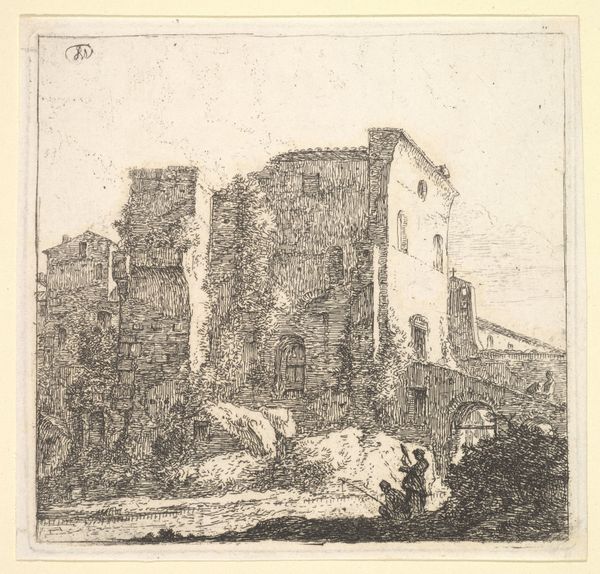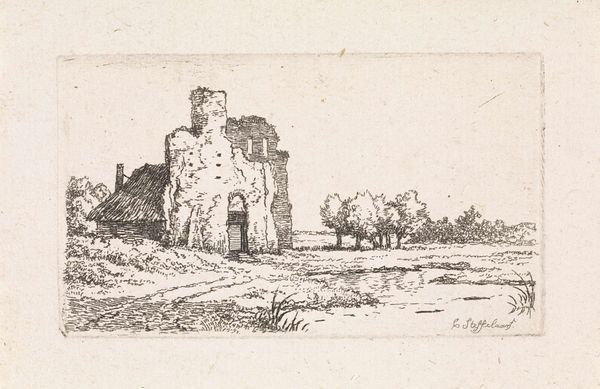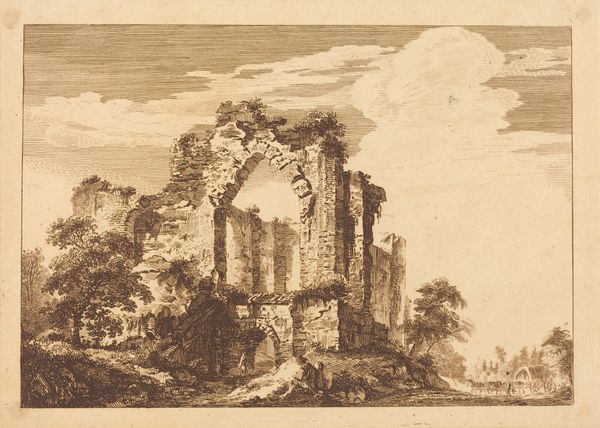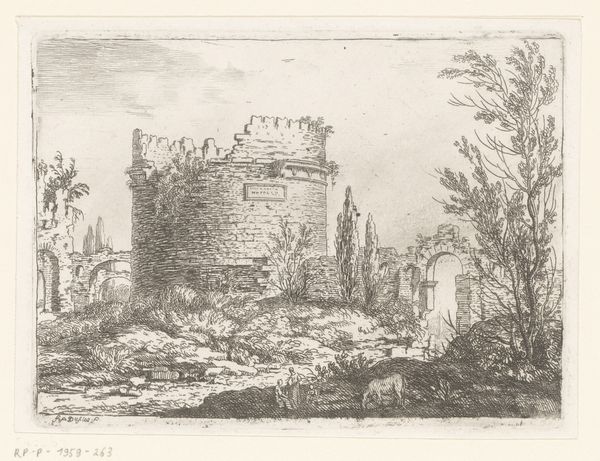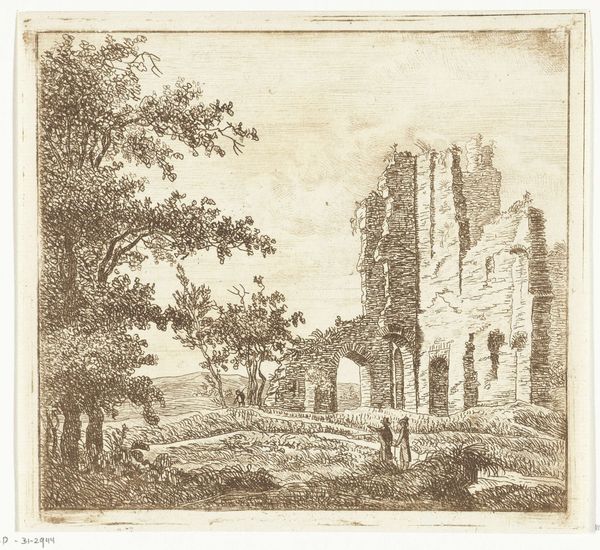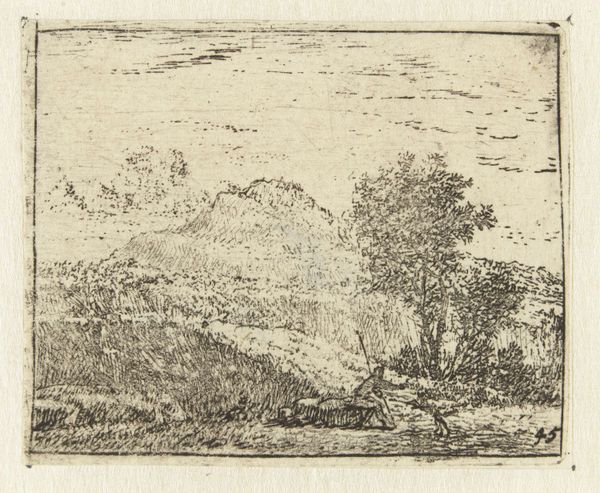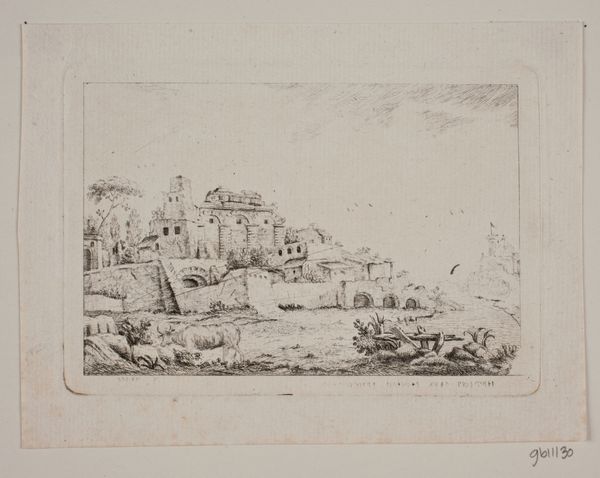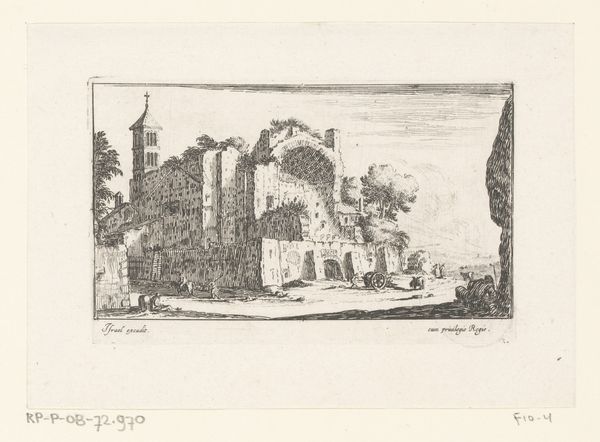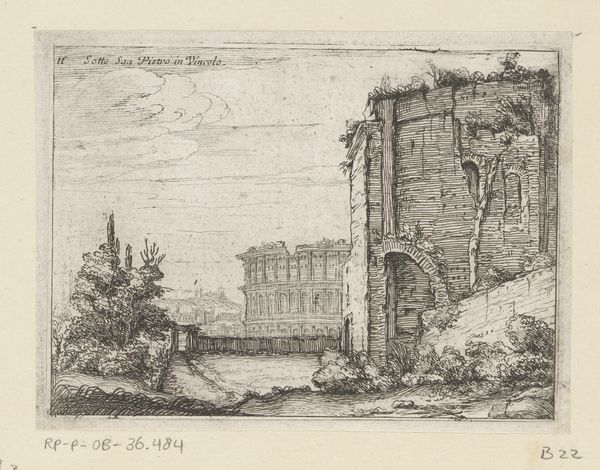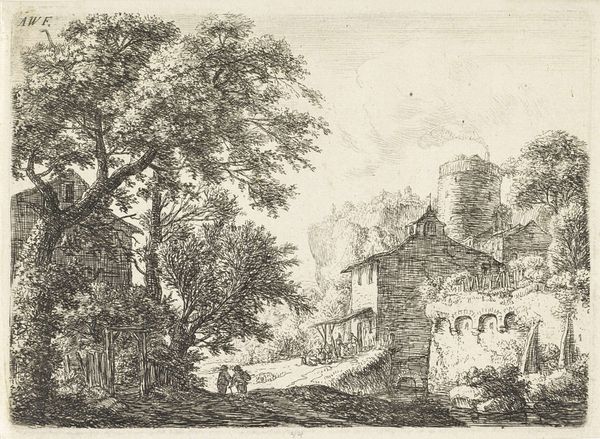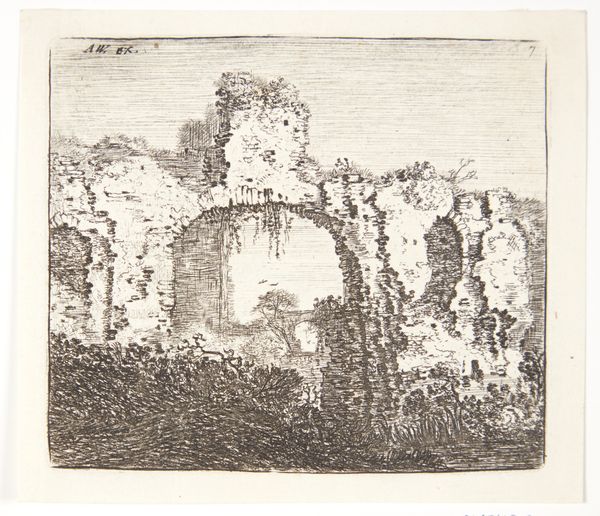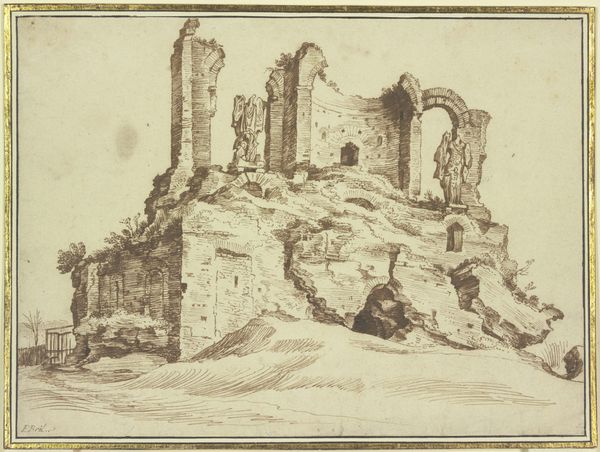
drawing, print, etching
#
drawing
#
baroque
#
ink painting
# print
#
etching
#
landscape
Dimensions: 84 mm (height) x 97 mm (width) (bladmaal)
Jan Ruyscher’s small etching captures a ruined arch, a window onto nature, made in the Netherlands in the mid-17th century. Ruyscher, working during the Dutch Golden Age, wasn’t alone in depicting ruins. The art market had expanded, and with it, the range of subjects considered worthy of representation. Landscapes, cityscapes, and scenes of daily life gained popularity alongside traditional religious and historical themes. But this image of decay speaks to more than just changing tastes. In the wake of the Reformation, grand religious structures became suspect, as did any display of excess or opulence. A humble ruin, overgrown with vegetation, could symbolize the transience of earthly power and the triumph of nature. Ruyscher, like other artists of his time, participated in a visual culture that subtly reflected and shaped the social values of its audience. By studying the prints and paintings popular in Ruyscher’s day, alongside historical documents, we can uncover the complex interplay between art, society, and the institutions that supported them.
Comments
No comments
Be the first to comment and join the conversation on the ultimate creative platform.
